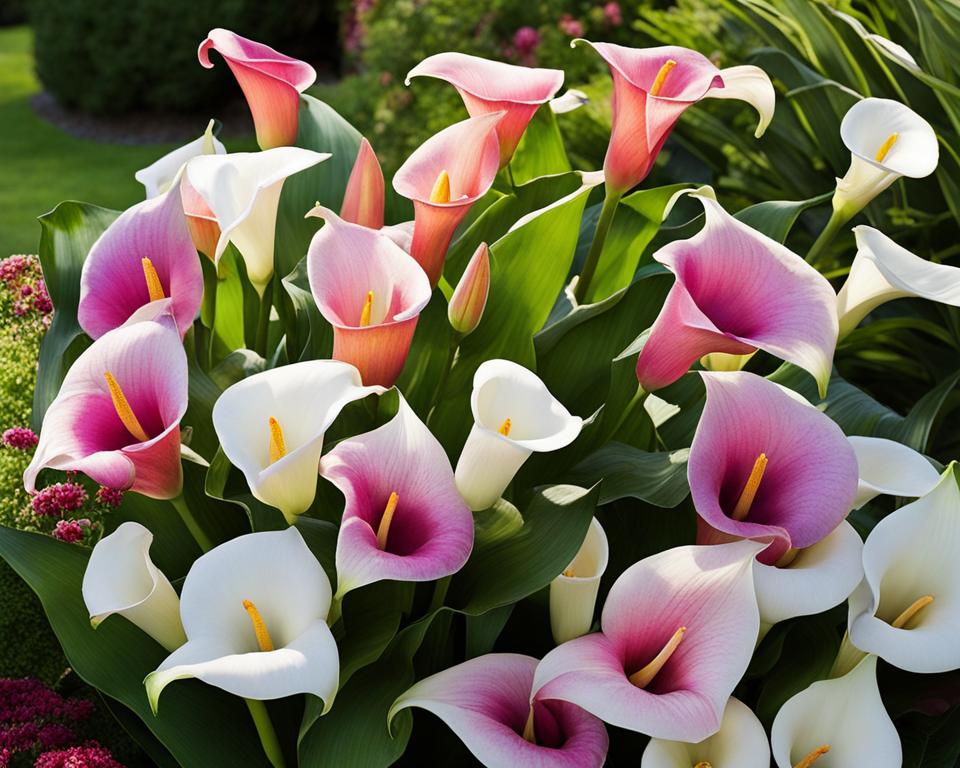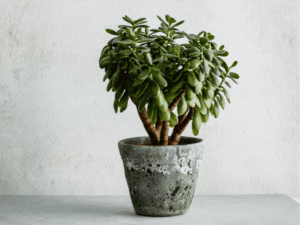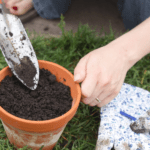Calla lilies are a stunning addition to any garden, with their vibrant colors and long-lasting blooms. Whether you’re a seasoned gardener or a beginner, growing and caring for calla lilies is easy and rewarding. In this article, we will provide you with essential tips on how to grow calla lilies and ensure they thrive in your home.

Calla lilies come in a variety of colors and can bloom for weeks, adding a touch of elegance to containers, borders, mass plantings, and cut flower arrangements. These beautiful flowers can also be grown indoors as houseplants, bringing their beauty closer to you. Let’s get into the details of growing and caring for calla lilies so you can enjoy their stunning blooms.
Key Takeaways
- Plant calla lilies in well-drained, porous soil in a sunny to partially shaded area.
- Water calla lilies when the soil is slightly dry, avoiding overwatering and soggy soil.
- Remove spent blooms and damaged leaves for proper maintenance.
- Watch out for common pests and diseases that may affect calla lilies.
- Consider using calla lilies in various garden designs and floral arrangements for a striking display.
Basics Of Calla Lily Care
Calla lilies, scientifically known as Zantedeschia spp. and hybrids, are herbaceous or semi-evergreen perennials that grow from rhizomes. They prefer full sun to partial shade, with bright, indirect light being ideal. The flowers come in a variety of colors, including white, yellow, orange, pink, red, purple, green, and black.
The plants can reach a height of 18 to 24 inches and have elegant stems with broad leaves. Calla lilies bloom about eight weeks after planting and continue to flower for a couple of months.
When it comes to calla lily care, there are a few essential practices to keep in mind. First and foremost, these plants prefer well-drained, porous soil. It is important to water them when the soil is slightly dry, but be cautious of overwatering as it can lead to root rot.
Additionally, it is important to be aware of common pests and diseases that can affect calla lilies. Bacterial soft rot, botrytis, powdery mildew, gray mold, blight, and leaf spot are some of the potential issues. Regular monitoring and taking appropriate action can help prevent and treat these problems.
In colder climates, calla lilies can be treated as annuals or lifted and stored in a dry environment during the winter months.
Planting Calla Lilies
If you want to add the beauty of calla lilies to your garden, it’s important to know the proper planting techniques. Here’s a step-by-step guide on how to plant calla lilies:
- Choose the right time: Calla lilies should be planted between February and June, after the danger of frost has passed. This will give the plants enough time to establish and bloom.
- Find the perfect spot: Grow calla lilies in a sunny to partially shaded site. Look for a location with well-draining soil that has been amended with organic matter.
- Prepare the soil: Before planting, make sure the soil is loose and well-draining. If the soil is heavy clay, add organic matter or sand to improve drainage.
- Plant the rhizomes: Dig a hole that is about 3 to 4 inches deep. Place the calla lily rhizomes in the hole, with the pointed end facing up. Space the rhizomes about 12 to 18 inches apart.
- Backfill and water: Gently backfill the hole with soil, covering the rhizomes completely. Water the newly planted calla lilies thoroughly to settle the soil.
For best results, ensure that the calla lilies receive regular watering and are kept in moist soil. Remember not to overwater, as calla lilies don’t like soggy conditions.
Care and Maintenance of Calla Lilies
Proper care and maintenance are essential for the health and longevity of your calla lilies. By following these tips, you can ensure that your plants thrive and reward you with beautiful blooms:
Watering
Grow calla lilies in moist soil; it’s important to keep them well-hydrated. The frequency of watering depends on the weather conditions. During hot and dry periods, you may need to water your calla lilies more frequently, while during cooler and wetter periods, you can reduce the frequency. To avoid overwatering, make sure the soil is well-drained. Water deeply, allowing the water to reach the root zone.
Deadheading
Deadheading spent blooms and removing damaged or discolored leaves is crucial for maintaining the plant’s health and appearance. Therefore, regularly remove spent blooms by cutting them off at the base. This will not only keep your plants looking tidy but also encourage more blooming.
Fertilization
Calla lilies are not heavy feeders, but they can benefit from a balanced fertilizer application once every month during the growing season. Fertilize your calla lilies when you plant them and then again in the spring. Choose a balanced, water-soluble fertilizer and follow the instructions on the package for the correct dosage. Avoid over-fertilizing, as it can lead to excessive foliage growth without producing many flowers. Spread the fertilizer evenly around the base of the plant, taking care not to let it come into direct contact with the foliage.
Pest and Disease Control
Keep an eye out for common pests like slugs, Japanese beetles, aphids, spider mites, and thrips. If you notice any signs of infestation, take appropriate measures to control them. Watch for symptoms of diseases like bacterial soft rot, botrytis, powdery mildew, and gray mold, and treat them promptly to prevent further damage.
| Problem | Solution |
|---|---|
| Bacterial Soft Rot | – Avoid overwatering – Plant in well-drained soil – Remove affected parts and treat with fungicide |
| Botrytis | – Provide proper air circulation – Avoid overhead watering – Promptly remove dead or decaying plant material – Use fungicides if necessary |
| Pests (aphids, slugs) | – Control aphids with insecticidal soap or water jet – Use organic methods to control slugs – Maintain a clean garden and regularly inspect for pests |
Propagation
If you wish to expand your calla lily collection or share these beautiful flowers with friends, propagation is the way to go. There are two main methods you can use: dividing rhizomes and growing from seeds.
To divide rhizomes, carefully dig up the mature plants in early spring or late fall. Gently separate the rhizomes, ensuring each division has healthy roots and at least one growing point. Replant the divisions at the same depth they were previously growing and provide them with proper care.
If you want to grow your calla lilies from seeds, collect the seeds from mature plants after the flowering period. Sow the seeds in a well-draining potting mix and keep them in a warm environment. With patience and care, the seeds will germinate, and you can transplant the seedlings into individual pots or directly into your garden.
Calla Lily Varieties

Calla lilies are available in a wide range of beautiful colors and forms, making them a versatile choice for any garden or floral arrangement. Here are some popular calla lily varieties:
- Be My® Sunshine: This variety features bright yellow blooms that add a cheerful touch to any setting.
- Be My® First Love: With its soft pink flowers, this variety is perfect for romantic floral arrangements and garden displays.
- Be My® Heart: This variety showcases deep crimson blooms, adding a bold and passionate element to your garden or bouquet.
- Be My® Main Squeeze: Known for its vibrant orange flowers, this variety is sure to make a bold statement in any setting.
- White Calla Lily: The classic white Calla Lily is a timeless choice, adding elegance and sophistication to any occasion.
- ‘Odessa’: This variety features rich purple flowers with darker speckles, creating a dramatic and eye-catching display.
- ‘Picasso’: With its striking combination of white blooms and bold purple edges, this variety is a true work of art.
- ‘Mozart’: This variety showcases creamy yellow flowers with dark purple centers, creating a beautiful contrast.
- Captain Reno®: With its unique combination of purple and green flowers, this variety adds a touch of intrigue to any garden or arrangement.
Also Read: 14 Types Of Yellow Lilies To Add Elegance To Your Garden
Calla Lily Varieties in Garden Designs
Each calla lily variety brings its own unique charm to garden designs. The vibrant colors and elegant shapes of calla lilies make them perfect for creating focal points, borders, or mass plantings in your outdoor space. You can mix and match different varieties to create a stunning color palette or choose one variety for a more uniform look.
In addition to their use in garden beds, calla lilies can also be planted in containers, allowing you to easily move them around and create beautiful displays on patios, decks, or balconies. Their long-lasting blooms and lush foliage make them an excellent choice for container gardening.
Using Calla Lilies in Floral Arrangements
Calla lilies are a popular choice for floral arrangements due to their elegant appearance and long-lasting blooms. Whether used on their own or combined with other flowers, calla lilies add a touch of sophistication to bouquets, centerpieces, corsages, and more. The variety of colors available allows you to create arrangements that match any theme or occasion.
When using calla lilies in floral designs, it’s important to take advantage of their unique shape. Their trumpet-like spathes can be showcased in tall, slender vases or arranged in a cascading manner for a dramatic effect. Whether you’re planning a wedding, special event, or simply want to brighten up your home, calla lilies are an excellent choice for adding beauty and elegance to any floral arrangement.
Companion Planting Ideas
- Dahlias: Pairing calla lilies with dahlias creates a captivating combination of flowers in various shapes and sizes.
- Gladiolus: The vertical spikes of gladiolus complement the elegant stems of calla lilies, adding height and structure to flowerbeds.
- Ferns: The delicate fronds of ferns provide a beautiful backdrop for calla lilies, creating a lush and tropical feel.
- Astilbes: The feathery plumes of astilbes create a soft and romantic ambiance when paired with the graceful blooms of calla lilies.
Growing Calla Lilies Indoors
If you want to enjoy the beauty of calla lilies year-round, growing them indoors as houseplants is a great option. Calla lilies can thrive indoors if provided with the right conditions. Start by choosing a bright spot with indirect light for your calla lily. A sunny window that receives filtered light or an area near a bright window will work well. Avoid placing your calla lily in direct sunlight as it can cause the leaves to scorch.
When it comes to watering, it’s important to keep the soil slightly moist but not soggy. Overwatering can lead to root rot, so make sure the potting mix is well-draining. Water your calla lily when the top inch of soil feels dry. This will help prevent the plant from becoming waterlogged and promote healthy growth.
During the active growing season, which is generally spring and summer, you can fertilize your indoor calla lily once a month with a balanced liquid fertilizer. This will provide the plant with the nutrients it needs to thrive. However, during the dormant period, which typically occurs in fall and winter, you should reduce watering and move the plant to a dark area. Resume regular watering after two to three months to encourage new growth.
In addition to providing the right light and water conditions, it’s also important to maintain proper humidity levels for your indoor calla lilies. These plants prefer a humid environment, so you can mist the leaves with water or place the pot on a tray filled with water and pebbles to increase humidity.
Calla Lilies: Toxicity and Safety
While calla lilies are known for their beauty, it’s important to be aware that they are highly toxic to both pets and humans if ingested. All parts of the plant, including the flowers, leaves, and stems, contain toxic substances that can cause harm if consumed. If you have pets or young children at home, it’s crucial to keep calla lilies out of their reach and ensure they are not able to chew or ingest any part of the plant.
The toxins present in calla lilies can cause a range of symptoms if ingested, including mouth irritation, problems with swallowing, vomiting, and other gastrointestinal issues. In pets, these symptoms can be especially dangerous and may require immediate veterinary attention. If you notice that your pet has come into contact with calla lilies or is exhibiting any unusual symptoms, it’s important to seek professional help right away.
In addition to the risk of ingestion, avoiding direct contact with calla lilies is important, as their sap can cause skin and eye irritation in humans. When handling these plants, it’s a good idea to wear gloves and wash your hands thoroughly afterward. By taking these precautions, you can prevent any potential harm and enjoy the beauty of calla lilies without any worries.
Winter Care for Calla Lilies
As the winter approaches, it’s important to provide the necessary care for your calla lilies to ensure their survival. Whether you have potted calla lilies or those planted in the ground, proper winter care is essential. Here are some tips to help you with overwintering your calla lilies:
- Prepare potted calla lilies: Once the foliage of your potted calla lilies turns yellow, it’s time to prepare them for winter. Cut back the foliage to the ground and bring the pots indoors to a cool, dry environment. Avoid exposing them to freezing temperatures.
- Store in-ground calla lilies: For calla lilies planted in the ground, cut back the foliage to the ground as well. Carefully dig up the rhizomes and shake off any excess soil. Store the rhizomes in a dry environment with a temperature around 55ºF. Avoid watering them during this dormant period.
- Monitor moisture levels: During the winter, it’s crucial to withhold water from your calla lilies for at least eight weeks or longer. This dry period will allow them to rest and prepare for the next growing season. After the dormant period, you can gradually reintroduce light and water to jump-start their growth.
- Winterizing in warmer climates: In regions with milder winters, calla lilies can be left in the ground year-round. However, it’s still beneficial to take some winterizing measures, such as applying a layer of mulch around the plants to protect the rhizomes from cold temperatures.
Conclusion
Growing and caring for calla lilies can be a rewarding and fulfilling endeavor. These beautiful flowers are not only easy to grow, but they also bring a touch of elegance and charm to any garden or indoor space.
By following the planting, care, and maintenance tips provided in this post, you can ensure the success of your calla lilies. Enjoy the beauty and elegance that calla lilies bring to your space!
FAQ
Are calla lilies easy to grow?
Yes, calla lilies are easy to grow and care for.
What colors do calla lilies come in?
Calla lilies come in a variety of colors, including white, yellow, orange, pink, red, purple, green, and black.
Can calla lilies be grown in containers?
Yes, calla lilies can be grown in containers and make excellent additions to any patio or deck.
How often should I water calla lilies?
Calla lilies should be watered when the soil is slightly dry, but it’s important to avoid overwatering and soggy soil.
What pests and diseases should I watch out for when growing calla lilies?
Common pests and diseases that can affect calla lilies include bacterial soft rot, botrytis, powdery mildew, gray mold, blight, and leaf spot.
When should I plant calla lilies?
Calla lilies should be planted between February and June, after the danger of frost has passed.
What companion plants go well with calla lilies?
Some companion plants that go well with calla lilies include dahlias, gladiolus, ferns, and astilbes.
Can calla lilies be grown indoors?
Yes, calla lilies can be grown indoors as houseplants near a bright window.
Are calla lilies toxic to pets and humans?
Yes, calla lilies are highly toxic if ingested and should be kept out of reach of pets and children.
How should I care for calla lilies during the winter?
Potted calla lilies should be brought indoors to a cool, dry environment, while in-ground calla lilies should have their foliage cut back and rhizomes stored in a dry place.







